Introduction to Queen Farm information of Fazenda Rainha in Brazil

For professional baristas, please follow the coffee workshop (Wechat official account cafe_style)
Queen's Manor of Brazil
■ countries: Brazil
■ producing area: Morgiana
Name of ■ Manor: Queen's Manor (Fazenda Rainha)
■ Garden owner: Regina Helena Mello de Carvalho Dias belongs to the Carvalho Dias family.
■ varieties: Huang bourbon, Yellow Bourbon
■ treatment: half-sun treatment
■ altitude: 1400-1950m
■ flavor: sweet beans, clean, half-sun use will make her slightly bright acidity, but also good with sweet knot, some even have tropical fruit aromas.
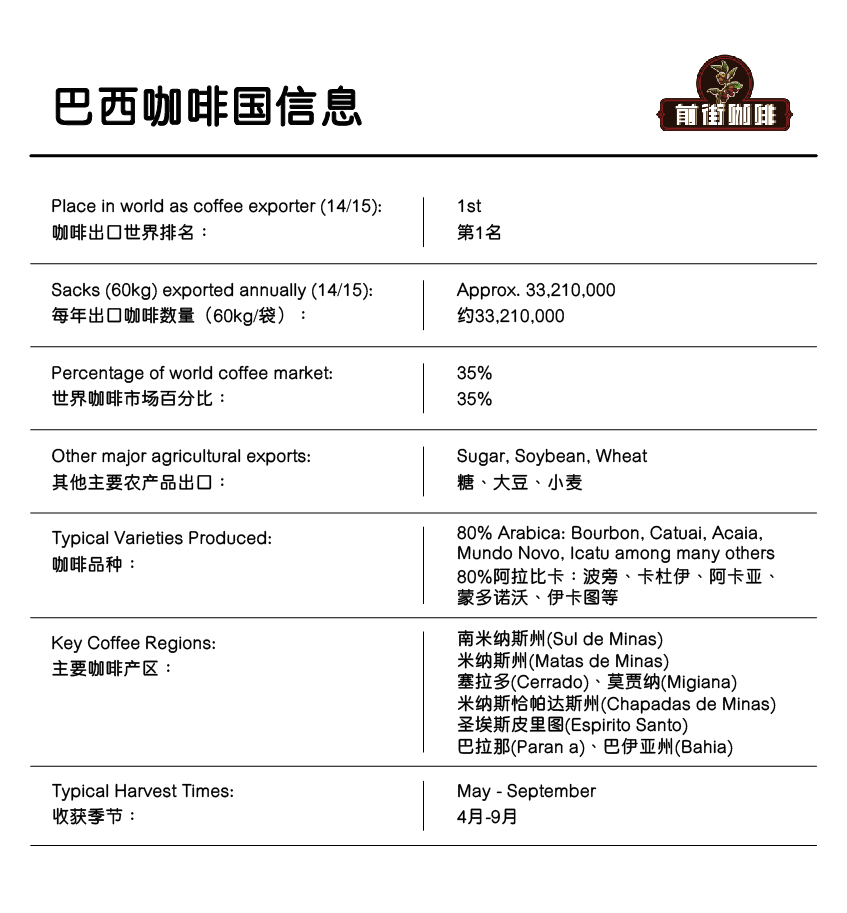
Brazil Coffee
Brazil is the world's largest coffee producer and consumer. Since 98% of local households drink coffee, Brazilian farmers do not have to linger to find a market for coffee, and Qianjie Coffee believes that few producing countries dare to boast so much. The Republic of Brazil, which was born in 1890, was similar to a military dictatorship in its early stage. due to the decline in the value of sugar and gold in the international market, the local government began to recognize the importance of coffee as a source of profit. Compared with other countries in Central and South America, the producing area of Brazilian coffee is obviously lower in altitude, flat in landform, lack of microclimate, and no shade for planting coffee trees. Therefore, Brazil has a unique "soft bean" flavor. After testing Brazilian coffee beans, the partners on the front street think that they have low acidity, nutty flavor, chocolate sweetness, balanced acidity and good mellowness, usually with some wood and soil flavor. It is quite different from the obvious floral and orange aroma of African beans.
As the world's largest coffee producer, the total output is the first in the world, accounting for about 1 of the world's total output, mainly concentrated in the central and southern provinces. There are many kinds of coffee in Brazil, and like other Arabica coffee, the vast majority of Brazilian coffee is not washed but dried, and they are classified according to the name of the state of origin and the port of transport. Brazil has 21 states and 17 states produce coffee, but five of them produce the largest, accounting for 98% of Brazil's total national production. They are Parana, Sao Paulo, Minas Gerais, Espirito Santo and Bashiya. The southern state of Parana has the most astonishing production, accounting for 50% of the total.
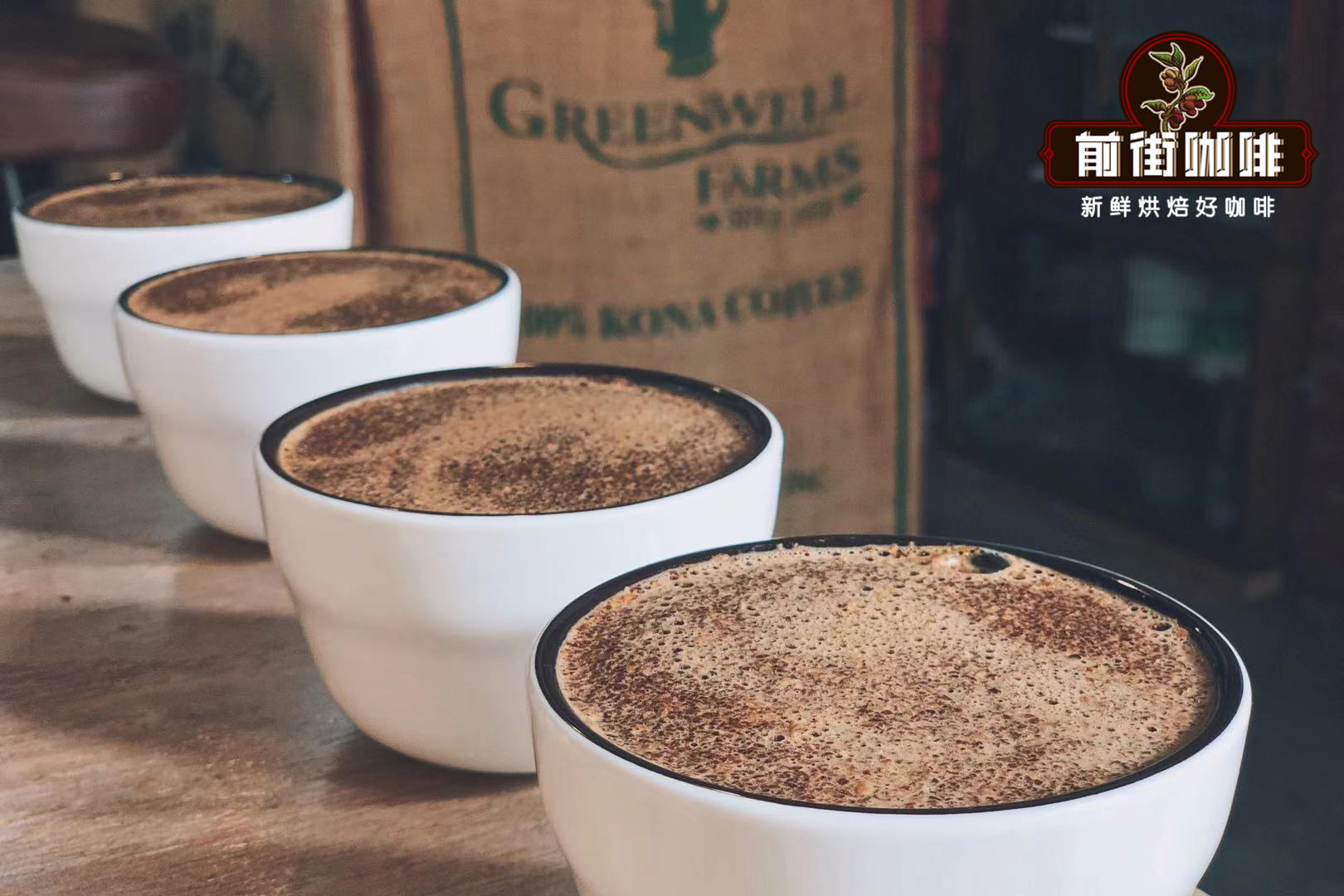
Five Taste classifications for aroma judgment of Brazilian Coffee
Brazilian coffee focuses on the mellow thickness and sweetness of soft beans, which is mild and smooth as a whole, so it uses five grades to distinguish different soft beans. Among them, the order is: extremely supple, slightly supple, not palatable, iodine choking taste.
And these five grades can distinguish between different Brazilian coffee producing areas:
Extremely meek (Strictly Soft): South Minas, Hirado, Mojiana, Bashiya turquoise plateau.
Supple (Soft): Bashiya, Minas southeast mountain forest, Parana, west-central S ã o Paulo, the hills of Espiritusando.
Slightly meek (Softtish): East and northeast of Minas.
Not easy (Hardish): Parana low Haida, Espiri Tusando.
Iodine choking (Rioy): Espiritusando flat, lower southeast of Minas.
Although Brazilian coffee feels monotonous, there are also many fine beans in Brazil recently, among which South Minas, Hirado, Mojiana and Bashiya have the most potential!
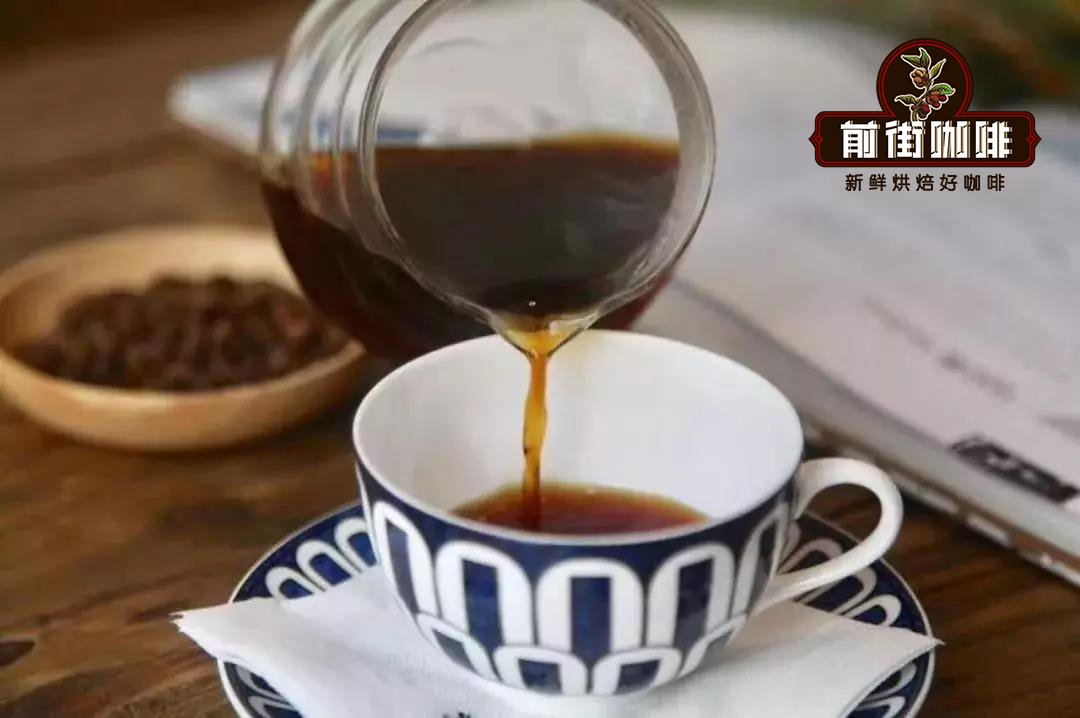
Brazilian coffee process
Brazilian coffee also has sun, semi-sun and washing treatment method, and the judgment method is mainly based on the dry and humidity conditions of each farm, so it presents the best flavor of each producing area, very diverse!
But why do most people still think Brazil is dominated by sunburn?
Front Street Coffee believes that there is a main reason that cannot be ignored is that before 1990 AD, almost all parts of Brazil adopted rough sun drying method, resulting in Brazilian coffee beans easy to have earthy taste and wood flavor, thus making Brazilian raw beans of poor quality and damaging the image.
However, after 1990, Brazil developed a semi-sun method, which not only shortened the operation time, increased the fruity and sweet taste, but also reduced the chance of coffee beans being stained with odors. The quality was improved a lot, and it was very suitable for brewing as a single coffee.
What kind of treatment method to use depends on the local humidity conditions! Plantations everywhere treat coffee beans in the way that reduces mold growth!
Brazil
Knowing which region your Brazilian coffee comes from will give you insight into its flavor, aroma, and even possible quality. With that in mind, Front Street Coffee will take you to the main Arabica coffee producing areas of the country.
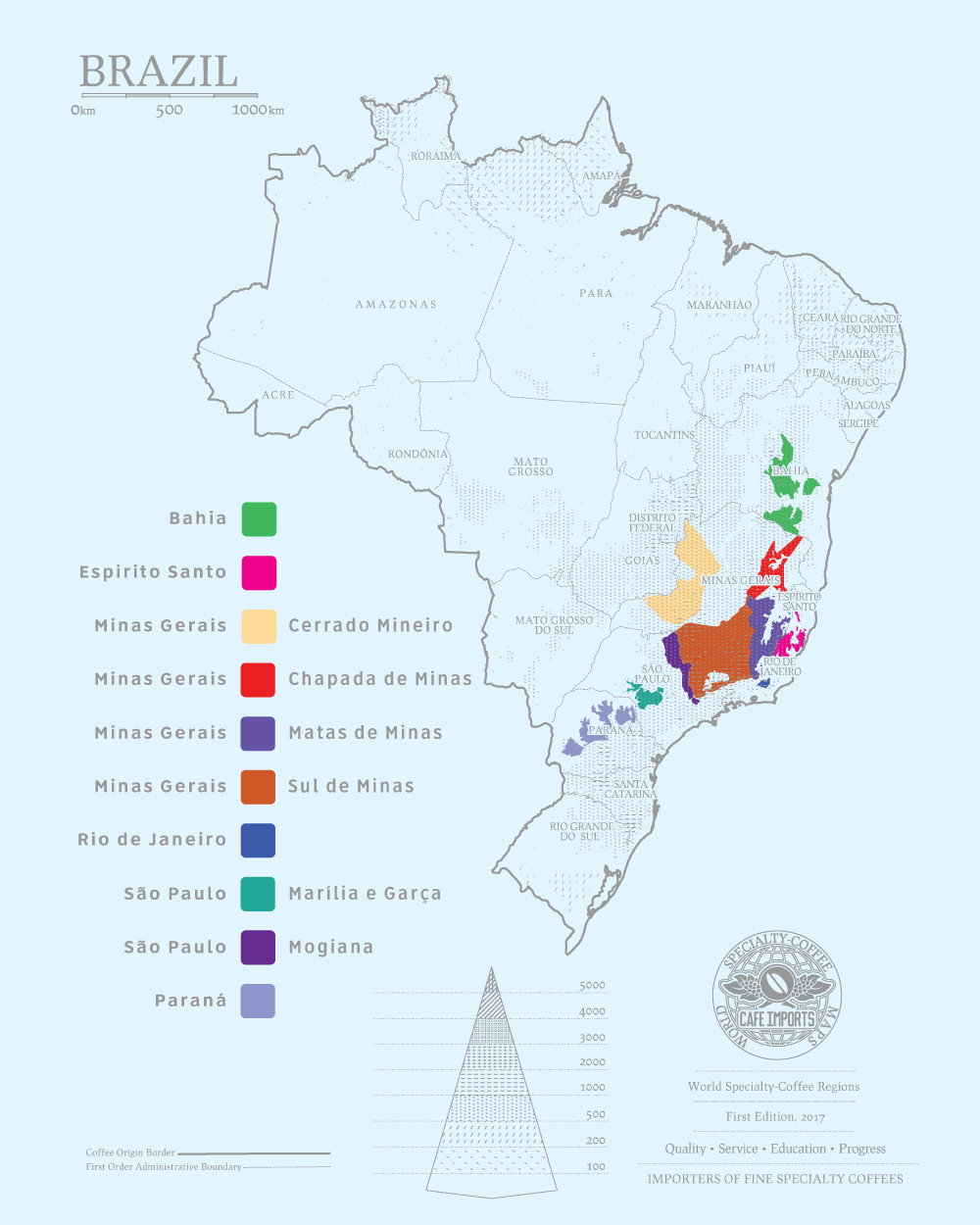
Minas Gerais, state of
Minas Gerais is Brazil's largest coffee-growing state, accounting for nearly 50% of the country's total production. It also happens to be the main source of Brazilian specialty coffee.
The producing areas of Minas Gilles are:
Minas, r.
Sul de Minas (also known as southern Minas) is high above sea level, with an average of 950m and a moderate annual temperature of about 22 degrees Celsius, accounting for about 30 per cent of Brazilian coffee production, mainly on 10 to 100 small farms.
The main varieties are Catua í, Mundo Novo, Icatu, Obat ã and Catua í Rubi. As for the flavor, you will usually find that the coffee here is full-bodied, with a hint of lemon and fruit.
Serrado de Minas
Serrado de Minas (Cerrado de Minas) is the first coffee region in Brazil to receive the title of name of origin (Cerrado Mineiro), which gives it a status similar to that of famous wine regions. The area covers a large area, consisting of 55 cities, located northwest of Upper Paranaba (Alto Paranaiba), Triangulominero (Triangulo Mineiro) and Minas Gerais (Minas Gerais). Its farms range from medium-sized (2-300 hectares) to large estates.
The area is 800-1300m above sea level and has a clear season (humid in summer and mild and dry in winter), making it very suitable for producing specialty coffee. Here you will find Mundo Novo and Catua í, Cerrado de Minas coffee with high acidity.
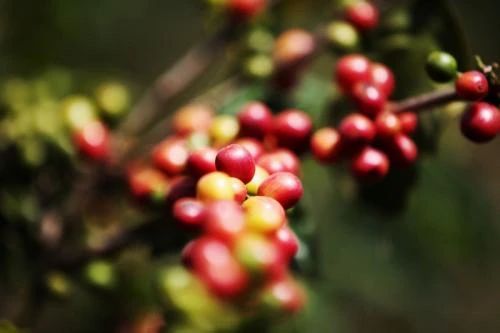
Chapada de Minas
The highlands of Chapada de Minas are scattered in the valleys and are suitable for mechanized production. Catua í and Mundo Novo are both grown here.
Matas de Minas
Matas de Minas is located in the Atlantic forest, the terrain is uneven, the climate is warm and humid. 80% of its production farms are less than 20 hectares. It is famous for increasing the production of specialty coffee, which is usually sweet with caramel or chocolate flavor. Catua í and Mundo Novo are grown here.
Sao Paulo
Sao Paulo is one of Brazil's long-established coffee-growing states. It is also home to Santos, Brazil's main coffee export port.
The main producing areas are:
Mogiana
Mogiana's favorable altitude (1400-1950m), mild temperature (average 20 degrees Celsius) and uneven terrain give the coffee excellent quality and a very sweet and balanced flavor. You will find Mundo Novo and Catua í here.
St. Paul's Grand Theatre
The hilly area consists of cities such as Marilia, Gar ç a, Ourinhos and Avar é. Like Mogiana, the terrain is not flat. Most farms are small and medium-sized.
Esprito Santo
Esp í rito Santo de Esp í rito Santo is the second largest coffee producing state in Brazil and the largest producer of Robusta.
The producing areas in Esp í rito Santo are:
Montanhas doEsp í ritoSanto
This upland area has a moderate temperature and an altitude of between 700 and 1000m, which can produce satisfactory specialty coffee. The area is famous for its high acidity and fruity taste, and the main cultivated varieties are Mondono and Katua.
Conilon Capixaba
Conilon of Robusta, Brazil, grows here, usually on small farms and at low elevations.
Bahia
The state of Bahia in northeastern Brazil is a newly added coffee producing area, and coffee cultivation began in the 1970s and is known for its high-quality beans and the use of technology. About 75% of the crops in the area are Arabica coffee.
There are two producing areas in Bahia:
Serrado and Pranalto da Bahia
This is the most high-tech coffee producing area in Brazil. From planting to harvesting, full mechanization is common locally.
However it is not just the level of productivity in the region that is significant. Ant ô nioRigo de Oliveira, from the Cha ç ar á S ã oJudas Tadeu farm in the city of Piat, also won Brazil's 2015 Pulped Naturals Award of Excellence with a score of 91.22. Ant ô nio was also awarded the Presidential Coffee Seal for scoring more than 90 points.
As for the climate of the area, it is high above sea level, warm, dry in summer and rainy in winter.
Atlantic Baiano
Like Conilon Capixaba, the area produces Conilon (Robusta) on small farms at low elevations.
Parana.
Norte Pioneiro do Parana coffee plantations in Parana are dense and productive.
Randonia
The area specializes in growing Conilon (Robusta) coffee. It has a tropical climate, high temperatures and low elevations.
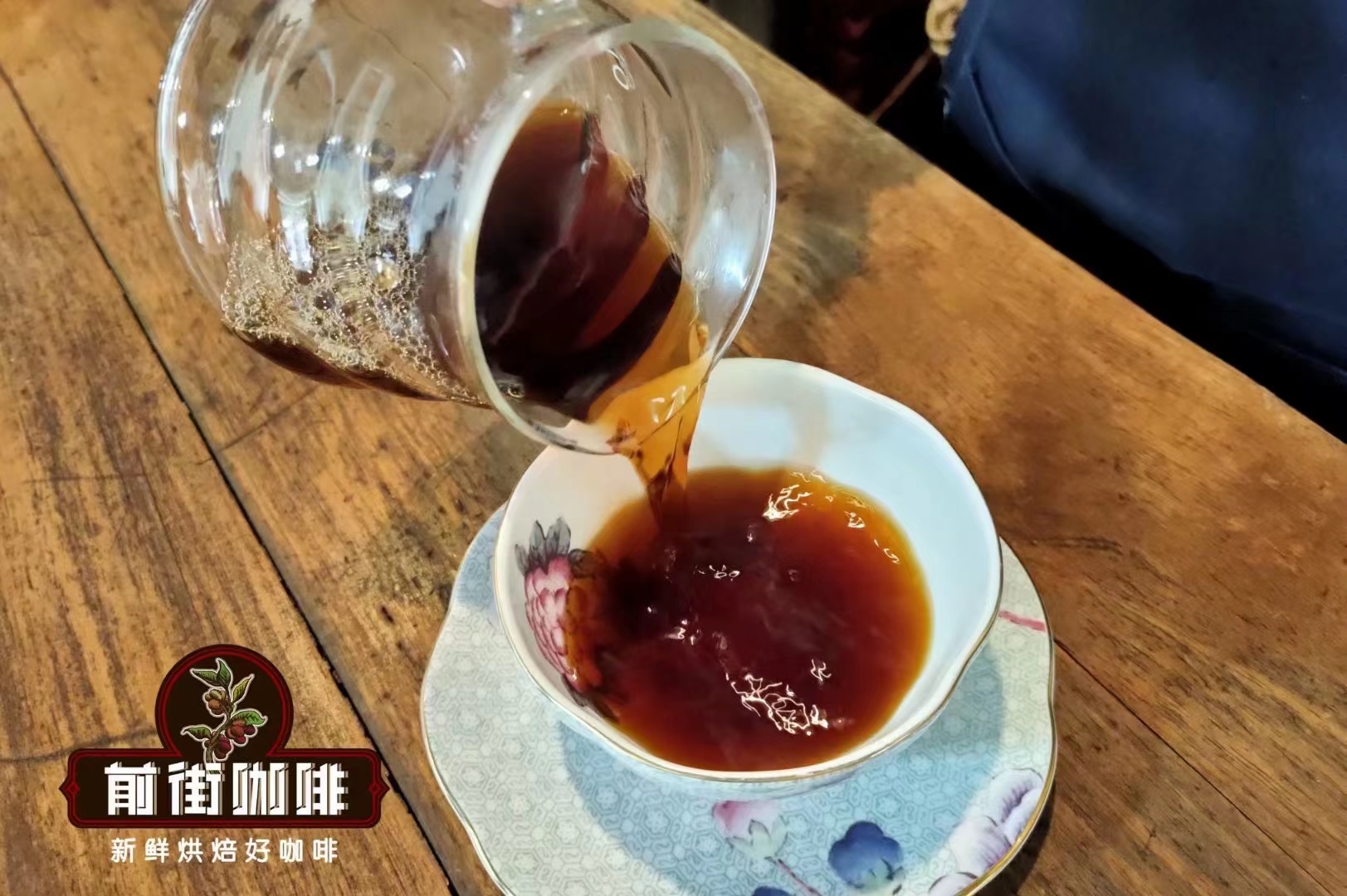
Queen's Manor
Fazenda Rainha (Queen Farm) is located in the Alta Mogiana area of Sao Paulo State (Sao Paulo), north of the city of S ã o Paulo. This manor is well-known in Brazil and is owned by the Carvalho Dias family. Since the first Brazilian COE competition in 1999, Carvalho Dias has won awards every year, winning more than 12 times in the past seven years, and even arranged for the champion, 9th, 11th, and so on in 2004. Many manors of various sizes in Brazil have been hoping to be shortlisted for many years, but it is difficult to get them. And Queen's Manor (Fazenda Rainha) enjoys a brilliant record: 2000 runner-up, 2001 second runner-up, 2005 29th place, so far, Queen's Manor has won three awards. Yellow bourbon beans are sweet and clean by nature, and the use of sun (or half-sun) will make them slightly less sour, but combine well with sweetness and have tropical fruit aromas.
The Carvalho Dias family is the founding member of the Brazilian Fine Coffee Association. The persistence of coffee quality and the maintenance of the environment are obvious to all. In the family farm, the use of natural waterfalls to develop pollution-free hydropower, self-sufficient electricity demand (another award-winning member of the family is named Waterfall Manor after this waterfall) Construction of churches, classrooms, nurseries, medical stations, maintenance of primitive forests of native animals and plants, and continuous afforestation.. In the case of the Queen's Manor, the environmental protection is quite thorough. because of the high terrain and non-plain terrain, it is impossible to harvest by machine, harvest the fruit completely by hand, and plant bourbon seeds with low yield and high quality. as the essence of high-quality Brazilian coffee on behalf of the manor! This batch of Queen's Manor (Fazenda Rainha) belongs to the Carvalho Dias family and has been around for more than 116 years. Located in the high mountain area of Sao Paulo near the Minas border, 1200 meters to 1400 meters above sea level, the annual rainfall is more than 1800 mm, but it will not cause heavy rain, the average annual temperature is only 19 ℃, so the bean fruit grows slightly slowly, but the texture density is enough, although the yield is less, but the aroma and flavor is not ordinary Brazilian plateau beans can hope its back, the manor is mainly bourbon species, even more than 110years old bourbon species! In addition to planting bourbon seeds, the delicacy and care of her handling method is another key to excellent quality.
Peeling and Meat handling system of Queen's Manor (Coffee processing system)
The ripe cherry fruit is picked on the cloth bag by hand to avoid touching the ground. The coffee fruit harvested on the same day must be sent to the treatment plant to which the manor belongs for half-sun treatment (Pulped Natural). The coffee fruit is picked by hand and surrounded by cloth. This is to avoid the earthy taste and any improper fermentation flavor. When the harvested coffee fruit arrives at the processing site, wash the coffee fruit immediately: wash the coffee fruit clean. The unqualified or dried fruits (b ó ia beans) were screened out according to the size partition of the bean body, and the qualified beans were screened, and the peeling action continued (using the pulper machine).
There are 200 mu of Huangbo coffee trees planted in the manor, and the undulating mountains make it impossible for large-scale mechanical harvesting, so all the coffee here needs to be harvested by hand.
The manor uses sun / half-sun treatment, semi-washing through drying racks and baking machines, and mechanical screening is supplemented by manual screening. a lot of work requires farm employees to live on the farm all year round. All employees and their families can enjoy housing, health care and education benefits here.
The estate is a member of a local Grama Valley medium-sized farm organization that mainly exports boutique coffee from bourbon varieties. The organization's office is located in nearby Pocos de Caldas, and they also have a national cup testing laboratory with a large warehouse. The group also works with local universities and other institutions to conduct research, including Lavras University, where the famous Dr. FlavioBorem is from its agricultural research center.
Award record of Queen's Manor
13th in 2014 COE Cup of Excellence
No. 02 COE Cup of Excellence in 2013
No. 08 COE Cup of Excellence in 2012
2011 COE Excellence Cup Champion
No. 20 in 2010 COE Cup of Excellence
No. 06 COE Cup of Excellence in 2009
No. 14 in 2008 COE Cup of Excellence
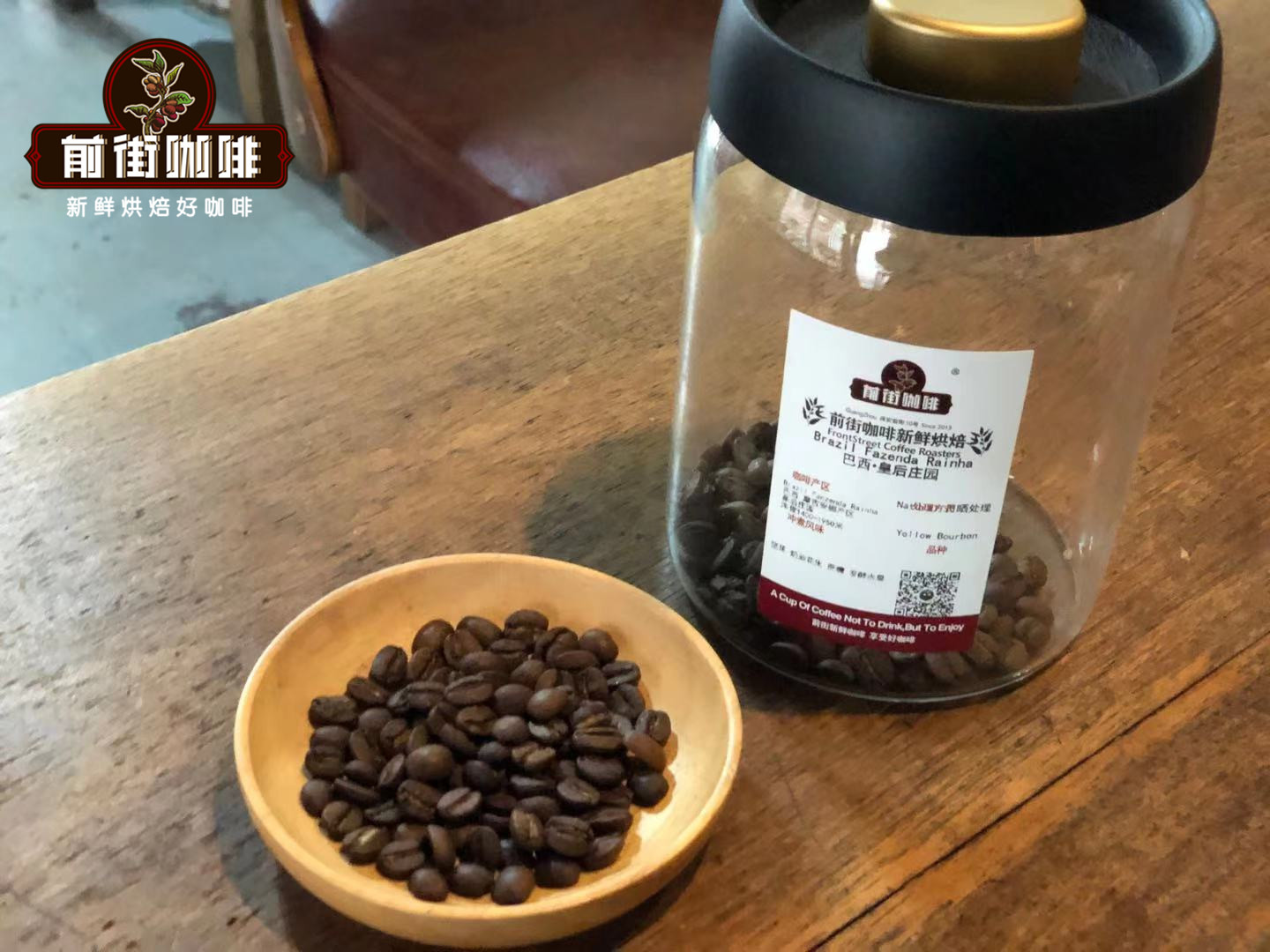
Raw bean analysis
The bean is treated using the Cerezadescascado method invented in Brazil. Qianjie Coffee believes that this natural treatment similar to honey treatment makes the coffee taste more round, with an effect between washing treatment and full-sun treatment. During the treatment, a small amount of water is used to remove the pulp and peel, and then the coffee is dried directly on the drying rack, which is constantly turned over to ensure that all the coffee is exposed to the sun. after several days of drying, mechanical drying is carried out to achieve the appropriate water content.
Baking analysis
The quality of raw bean is solid, the flavor is good, with a slight aroma of orange peel and spice, and the moisture content of raw bean is 9.9%.
The water content of the beans is relatively low, which makes the beans have a strong ability to absorb heat, so the Qianjie coffee roasting plan is to put 200 degrees into the beans, then a big fire and a small throttle to speed up dehydration, and when the dehydration stage is over, open the stroke door and medium heat to let Maillard react. Time is not too fast, close to a burst tail out of the oven.
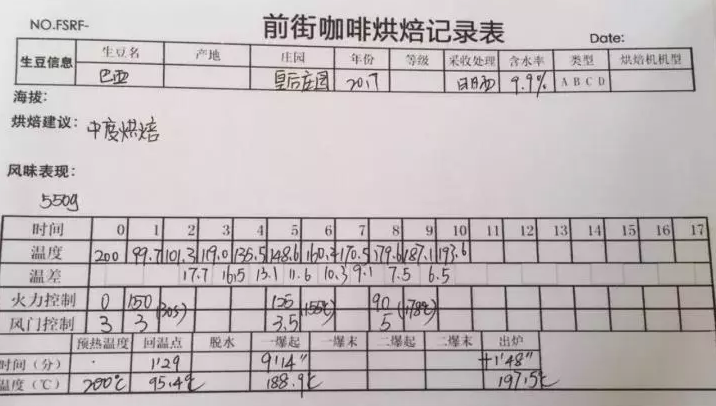
Qianjie coffee was baked 4 times before and after, and the final choice was between 1: 45-2 after the end of the explosion. Taste with obvious sweetness, but not so boring sweet, the background with a hint of lemon aroma, this aroma is more prominent in the wet fragrance stage, the latter part of the performance has an obvious taste of dark chocolate, the overall feeling is more round, while reflecting the overall characteristics of Brazil, without losing liveliness.
550g of beans
Cooking reference
Queen's Manor of Brazil. 15g powder, medium grinding (small Fuji ghost tooth cutter 4 grinding)
V60 filter cup, 88-89 degrees water temperature, 30g water injection for the first time, steaming for 27 seconds
Cut off the water when injected to 105g, wait for the water in the powder bed to drop to half, then inject water slowly until 225g, not at the end, the ratio of water to powder is 1:15, and the extraction time is 2:00.
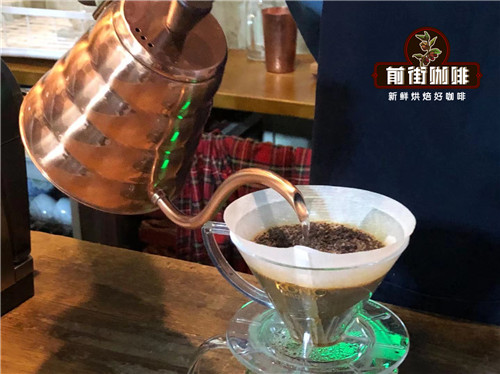
Flavor: Sweet, clean, semi-sun will make her acid slightly bright but with sweet knot back to excellent, some even have tropical fruit aroma, especially when brewing aroma, more people like. Sugar cane juice fresh sweet, black tea, soft fruit sweet, obvious nutty flavor, balanced and soft acidity, bitter slightly clean, rich chocolate aroma and nutty flavor, bright and refreshing taste, smooth and delicate taste.
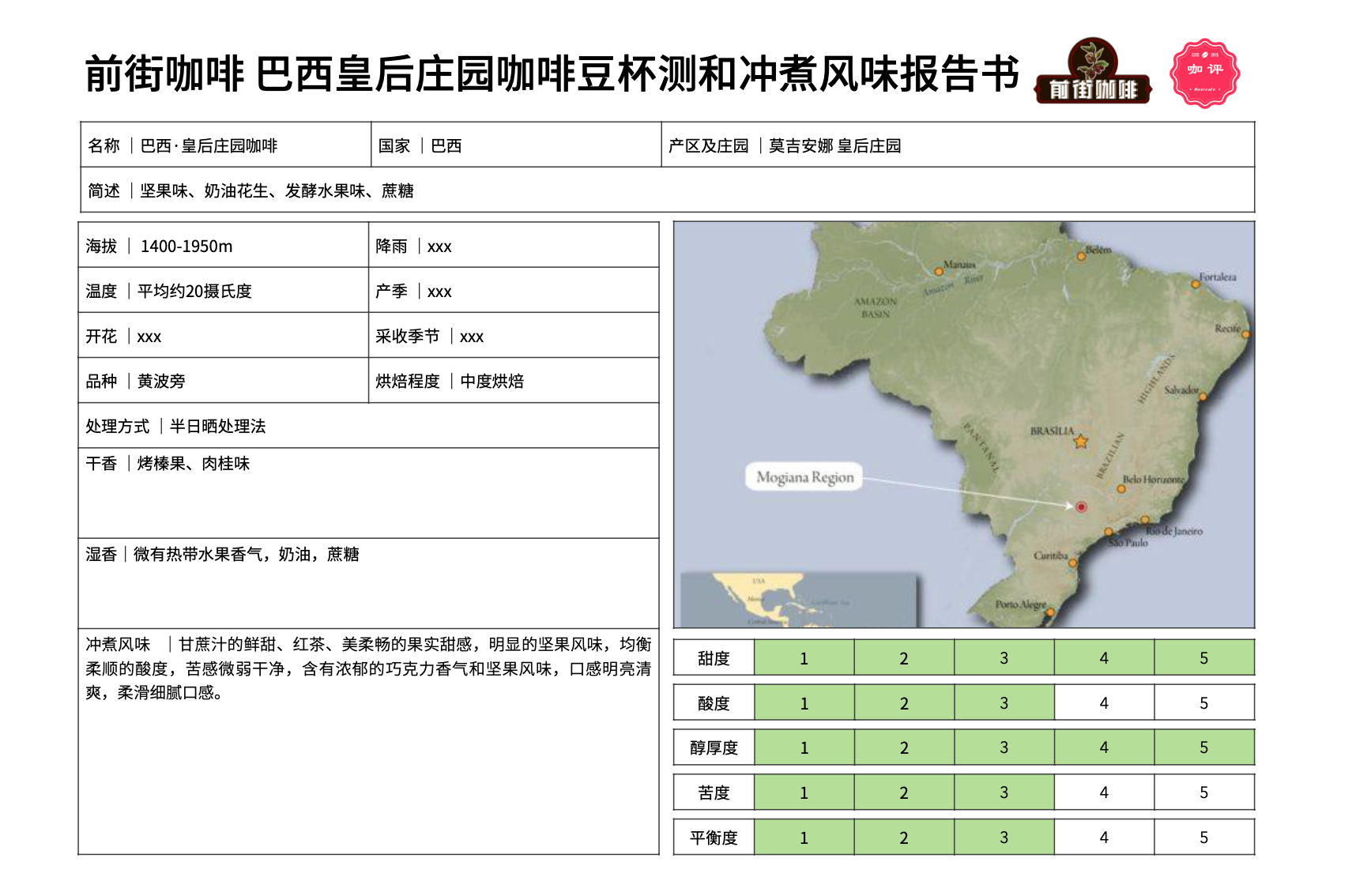
For more boutique coffee beans, please add private Qianjie coffee on Wechat. WeChat account: kaixinguoguo0925
Important Notice :
前街咖啡 FrontStreet Coffee has moved to new addredd:
FrontStreet Coffee Address: 315,Donghua East Road,GuangZhou
Tel:020 38364473
- Prev
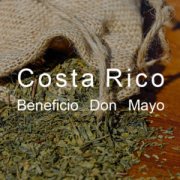
Introduction of El Llano Information of Don Orlando processing Plant in Hesta Manor, Costa Rica
Professional baristas please follow the coffee workshop (Wechat official account cafe_style) Costa Rica has traditionally prided itself on its washed coffee by picking ripe red-purple berries by hand and tightly controlling the soaking and fermentation process. Not much and not a lot of fermentation makes the coffee an excellent balance between clarity and complexity; even today in Costa Rica
- Next
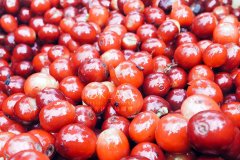
Introduction to coffee beans washed in summer with roses from Costa Rica-Tobushy Garden used by international contestants
Tobosi, one of the estates co-operated by Costa Rica Hacienda Tobosi Geisha Washed international contestants, was established in 2010, about 1450 meters above sea level, providing high-quality boutique coffee, with the goal of becoming a leader in the supply of boutique coffee. Strive to produce products in an open and transparent system and have a complete track record to ensure that
Related
- Detailed explanation of Jadeite planting Land in Panamanian Jadeite Manor introduction to the grading system of Jadeite competitive bidding, Red bid, Green bid and Rose Summer
- Story of Coffee planting in Brenka region of Costa Rica Stonehenge Manor anaerobic heavy honey treatment of flavor mouth
- What's on the barrel of Blue Mountain Coffee beans?
- Can American coffee also pull flowers? How to use hot American style to pull out a good-looking pattern?
- Can you make a cold extract with coffee beans? What is the right proportion for cold-extracted coffee formula?
- Indonesian PWN Gold Mandrine Coffee Origin Features Flavor How to Chong? Mandolin coffee is American.
- A brief introduction to the flavor characteristics of Brazilian yellow bourbon coffee beans
- What is the effect of different water quality on the flavor of cold-extracted coffee? What kind of water is best for brewing coffee?
- Why do you think of Rose Summer whenever you mention Panamanian coffee?
- Introduction to the characteristics of authentic blue mountain coffee bean producing areas? What is the CIB Coffee Authority in Jamaica?

